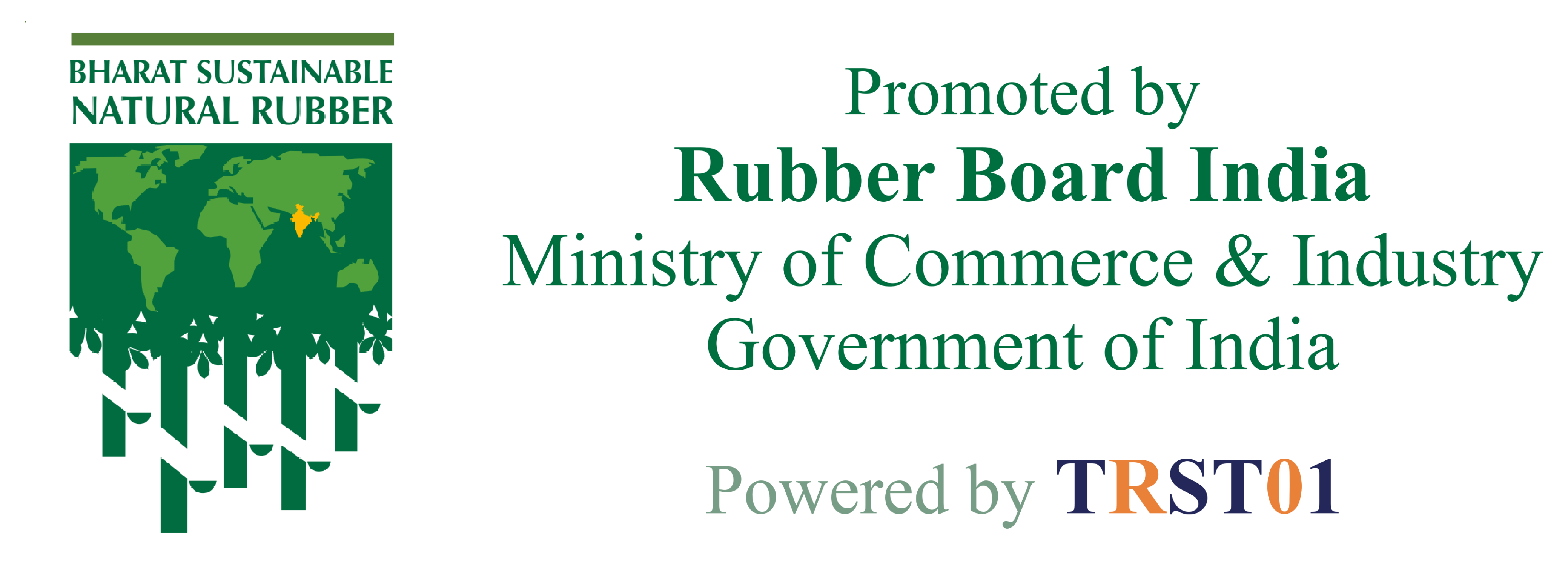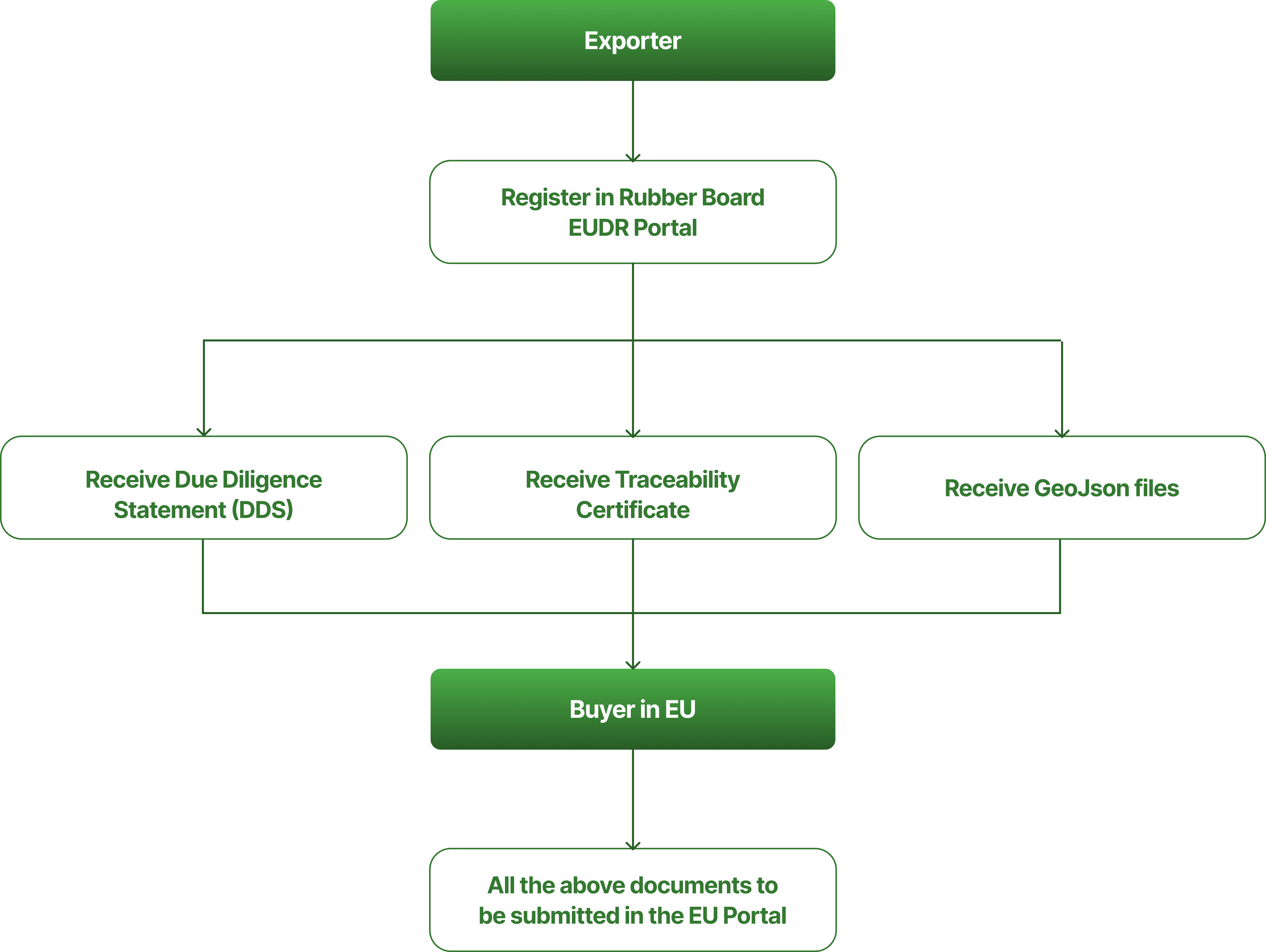




The first step is registration of all supply chain participants (farmers optional) on the Rubber Board EUDR portal. This creates a centralized database with essential information, laying the foundation for a transparent and traceable process.
Trained field executives visit farmers to onboard them, conduct polygon mapping, and complete KYC verification. This process collects detailed information, including the farmers' geographic boundaries and all necessary documents for EUDR compliance.
After registration, participants are mapped, and their rubber transactions are recorded through the use of IntelliTrack app. Training will be provided on using the IntelliTrack app to document the movement of rubber goods throughout the supply chain.
Dealers, sub-dealers, processors, and processors are trained on segregation and storage policies essential for EUDR compliance. Proper practices are crucial to maintaining supply chain integrity and traceability.
Finally, exporters can generate a traceability certificate through the Rubber Board platform, detailing the rubber's origin, polygon sets, and a Due Diligence Statement, ensuring full EUDR compliance.
Ensuring traceability in the rubber supply chain requires active participation from all stakeholders, including dealers, sub-dealers, processors, and exporters. Each group plays a unique role in maintaining a transparent, verifiable supply chain.
Register and provide necessary documents, including KYC details.
Complete training on the IntelliTrack mobile app for recording transactions.
Implement segregation and storage policies to keep EUDR-compliant rubber separate.
Register your facility and submit all required documents.
Undergo training on the IntelliTrack application for tracking rubber flow.
Implement practices to avoid mixing EUDR and non-EUDR materials, with separate storage.
Register on the Rubber Board EUDR Portal
Learn to use the IntelliTrack app for tracking consignments.
Implement segregation to avoid mixing EUDR and non-EUDR rubber, with proper storage.
As per EUDR [Article 8], prior to exporting Rubber to the EU market, exporters are mandated to exercise Due Diligence. For exercising Due Diligence (DD), three fundamental elements to be implemented which together form the continuous process of DD.
Exporters registered on the Rubber Board Portal will receive all the necessary information required by the EU, the system will facilitate risk assessment and provide relevant risk mitigation measures as well. All the required information will be provided to the exporter in the form of a Due Diligence Statement (DDS). This DDS can be shared with EU buyers to ensure compliance with EUDR requirements.
